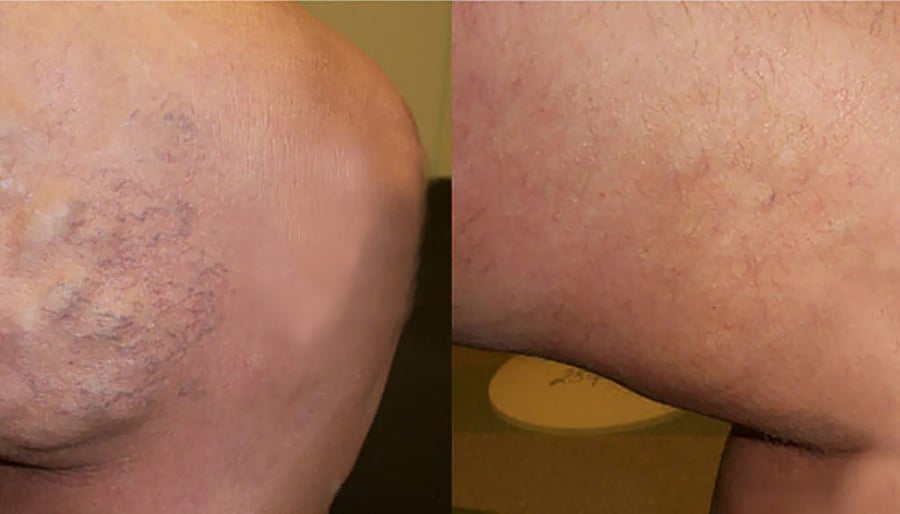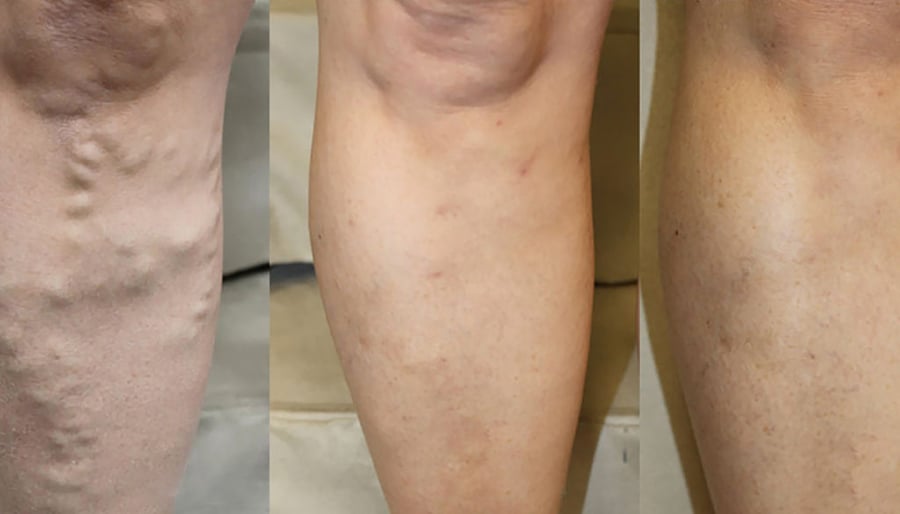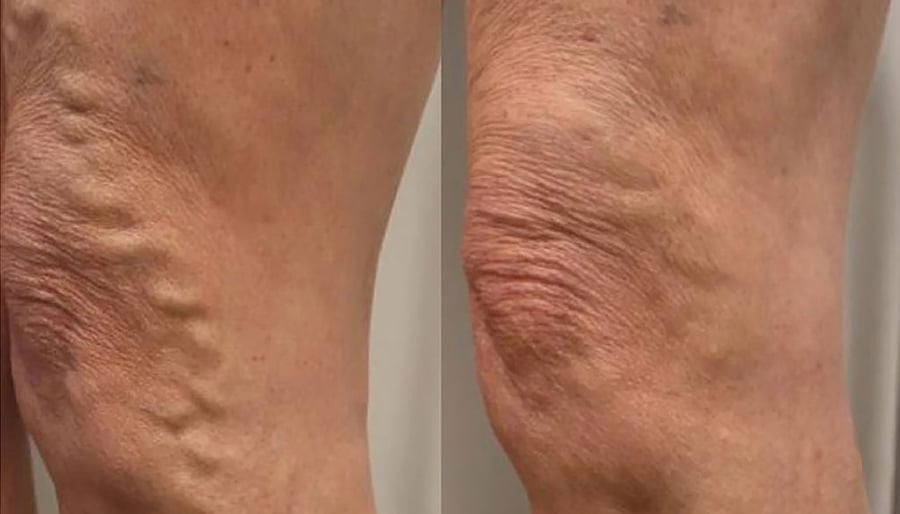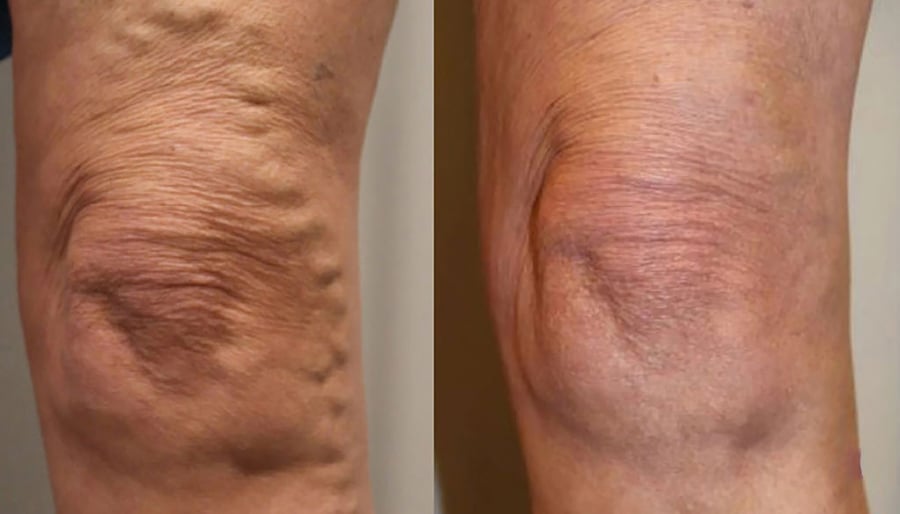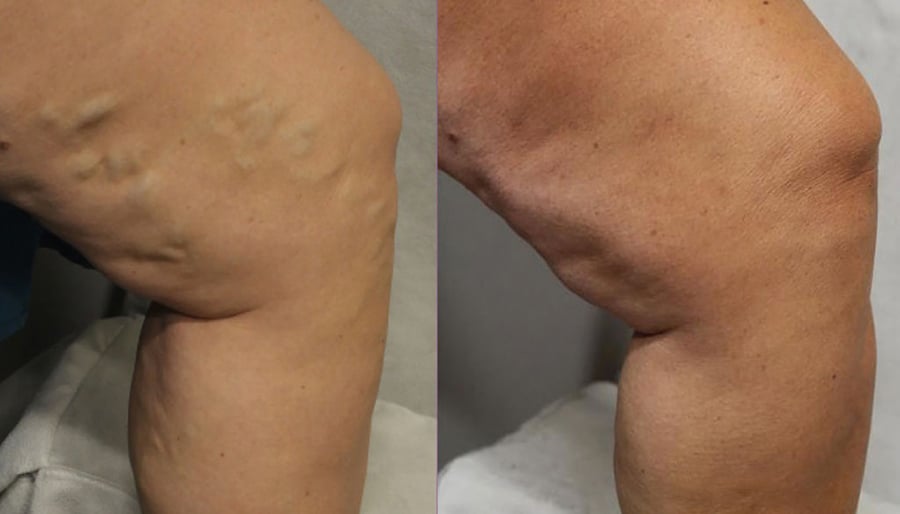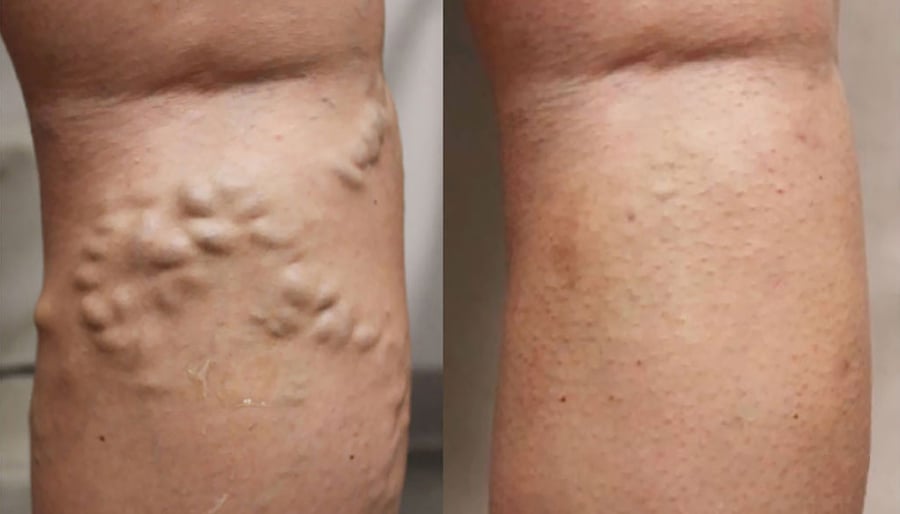Specialized Treatment for Varicose Veins
The Interventional Radiology physicians at Rochester Regional Health offer the highest level of expertise with years of experience in minimally invasive treatments for varicose vein symptoms. For our robust varicose vein practice, we have a dedicated practice called Rochester Regional Health Vein Treatment Center.
Our expert doctors have performed thousands of outpatient vein procedures and are dedicated to remaining leaders in the field. Our expertise in ultrasound imaging means you?ll get the most precise, thorough treatment possible. We blend the newest treatment techniques and technologies with a caring and committed staff. Our goal is to get you back on your feet, doing the things you love, without vein problems holding you back.
What are Varicose Veins?
The veins in your legs carry blood towards the heart, upward and against gravity.

Example of varicose veins on the back of an individual's leg.
Varicose veins occur when the one-way valves that your veins use to move the blood begin to weaken and do not close properly, causing blood to pool in the veins. They may be visible or may be only revealed via an ultrasound after causing other symptoms.
Who suffers from CVI and varicose veins?
Varicose veins are a common condition that affects people from all backgrounds. It is estimated that up to 40% of the U.S. population has venous insufficiency. Up to 25% of women and 15% of men will have visible varicose veins. However, many people have symptoms without visible varicose veins.
Common Symptoms of Varicose Veins
Advanced Treatments
Thermal vein ablation is a minimally invasive procedure used to close down problematic veins and relieve the symptoms they cause.
The Vein Treatment Center physicians are interventional radiologists with extensive training and years of experience in ultrasound imaging and image-guided procedures. This means they’re experts at guiding the laser to an exact location—ensuring precise treatment while minimizing complications.
The procedure begins by gaining access into the vein through a small needle under ultrasound guidance. A fiber is then directed into the faulty vein. The length of the vein being treated is numbed before being heat sealed closed as the fiber is retracted. This is all accomplished while patients rest comfortably, watching TV or listening to music.
After putting on post-treatment compression stockings, our patients are asked to walk for 15 minutes. Return to most normal daily activities is allowed immediately. The two-week recovery period while the vein heals requires few limitations, such as no heavy lifting or strenuous exercise. Any discomfort is usually managed with over-the-counter pain medication.
Thermal ablation is a safe and effective procedure. You may experience some soreness, bruising, and redness following the procedure. More severe complications are rare and include clotting of the deep veins, bleeding, numbness, and infection; these will be discussed at your consultation appointment.
VenaSeal is the latest advancement in varicose vein treatment to be approved for use by the US Food and Drug Administration (FDA). VenaSeal closes problematic superficial veins using a medical grade adhesive, or glue. When compared to other closure methods such as heat or radiofrequency, VenaSeal has three prominent advantages:
1. Minimized needle sticks
As there is no heat involved, the tissue surrounding the treated vein does not have be numbed. This means patients can avoid the numerous needle pricks usually required for numbing, making VenaSeal a great option for those especially sensitive to needles.
2. No compression stockings
Other treatments require the use of compression stockings for 2 weeks after the procedure to ensure proper healing and vein closure. However, the adhesive used for VenaSeal polymerizes within minutes, meaning patients are not required to wear compression stockings after the procedure. This is especially beneficial to people with an active lifestyle or those undergoing their procedure during the warm summer months.
3. No post-procedure restrictions
After other vein procedures, patients must avoid heavy lifting and strenuous exercise for 2 weeks. An amazing advantage of VenaSeal is that you can return to all activities immediately.
There is virtually no downtime. Your varicose veins can be treated without interrupting your daily routine.
VenaSeal is the latest in cutting-edge vein treatment technology, allowing patients to reap the aforementioned benefits while knowing the procedure is as safe and effective as heat methods. Our board-certified Interventional Radiologists rely on their ultrasound expertise to deliver the most precise and thorough treatments possible. The Vein Treatment Center was one of the first vein practices in the region to perform VenaSeal. We have now performed a large number of VenaSeal procedures. Our results have been overwhelmingly positive and support multiple clinical trials, showing VenaSeal to be a safe and effective varicose vein treatment option.

